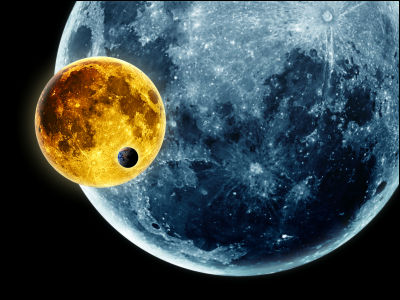NASA develops 'LunaNet' that provides the same mechanism as the Internet even in the month

NASA / Reese Patillo
NASA has developed a 'LunaNet ' architecture to expand its lunar activity in line with the
LunaNet: Empowering Artemis with Comm and Nav Interoperability | NASA
https://www.nasa.gov/feature/goddard/2021/lunanet-empowering-artemis-with-communications-and-navigation-interoperability
LunaNet: Enhancing Connectivity and Empowering Missions at the Moon --YouTube
In space missions, communication with the ground relies on space relays and pre-configured links with ground antennas. The problem with this method is that communication opportunities and efficiency are limited when multiple missions are in parallel. 'LunaNet' provides an Internet-like network approach that allows users to stay connected to large networks without the need to pre-schedule data transfers.
The core network framework of LunaNet is Delay Tolerant Networking (DTN) , which ensures that data flows seamlessly through the network and reaches its final destination, even in the event of signal disruption. In the event of a failure between two LunaNet nodes, the node will save the data until the route is restored.

In lunar navigation, LunaNet also ensures operational independence from data processing on Earth while maintaining high accuracy. Missions using LunaNet navigation will now have access to key measurements needed for orbit determination, guidance system operation, and positioning, giving them everything they need for autonomous flight on the Moon, whether on orbit. increase.
'LunaNet offers a new paradigm of earth-independent navigation, allowing manned and robotic missions to quickly locate themselves and feed them back into the planning system,' said Cheryl Gramling, deputy technical director. I will. '
In addition, LunaNet's detection and information services provide users with alerts and other important information, significantly improving situational awareness from astronauts, rover and other assets on the moon. For example, when a space meteorological instrument is used to detect dangerous solar activity, it can alert the user directly without waiting for instructions from a network administrator on Earth.
'Astronaut safety and health are important concerns in the Artemis program, using LunaNet's navigation services to provide location data to NASA's distress beacons,' said Cody Kelly, mission manager at the Search and Rescue Office. And we are prepared for the unforeseen situation. '
In addition, LunaNet's science service will provide researchers on the earth with measurement opportunities using radio and infrared optical communication links. The node network provides an opportunity for baseline observations of the Moon, enabling frequent measurements for long-term comprehensive studies of the Moon environment. The placement of nodes also allows for regional or global observations of the Moon, giving scientists access to Moon data on a large spatial scale.
LunaNet antennas may also be used in applications such as radio astronomy looking for radio radiation from distant objects. These features will provide scientists with a platform to test new theories about space science and deepen their scientific knowledge.
Related Posts:







